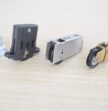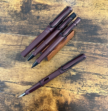Choosing the Right Sliding Door Roller: Practical Tips for Homeowners
Contents
Sliding doors have become a staple in Australian homes, seamlessly linking indoor and outdoor spaces while maximising natural light and ventilation. While the smooth function of these doors appears effortless, what makes it possible is a component often out of sight but central to performance – the sliding door roller.
Rollers take on the challenge of supporting the door’s weight, ensuring easy and silent operation. Poorly functioning rollers turn this convenience into a hassle by causing sticking, scraping, or even track damage. Reliable operation can only be achieved if the right roller is chosen and maintained.
What Makes a Good Sliding Door Roller

source: mrwindows.com.au
A sliding door roller must be robust enough to handle substantial loads, yet precise in construction to prevent noise and friction. The main materials used are nylon, steel, and brass, each chosen based on performance under distinct conditions.
- Nylon rollers are especially prized for their quiet operation and low wear on tracks, making them ideal for residential and lighter doors.
- Brass, often favoured in humid or coastal environments, resists corrosion and delivers years of reliable service.
- Steel stands out for heavy-duty applications, providing strength for doors that bear considerable weight but may require more frequent lubrication and careful attention to track condition.
Sealed bearings in rollers prevent dust and grime from entering, prolonging the life and performance of both roller and track. For homes in regions with changing weather, choosing a corrosion-resistant and well-sealed model is a key investment for the future.
Selecting and Using the Right Roller for Your Needs
Successfully selecting a roller requires considering factors beyond simply matching the visible size. The weight and width of the door must be checked, as rollers are rated for different capacities, so choosing incorrectly could lead to premature failure or safety issues.
Track profile and housing design also influence compatibility. Some rollers offer adjustability, enabling users to fine-tune door height for perfectly level, stable movement, even if foundations have settled over time.
Special needs such as accessibility or enhanced safety for children and pets can often be addressed by choosing a roller that glides more easily and securely. Some advanced designs feature quick-release mechanisms, allowing for hassle-free removal and cleaning, a major boon for households where low maintenance is a priority.
Installation can be straightforward when replacing the same model; however, when upgrading or changing styles, it’s best to double-check mounting holes, depth of installation, and material thickness. Tools required typically include screwdrivers and a tape measure, but heavier doors may need extra hands or even a specialist to ensure rollers are fitted securely and doors hang evenly for safety and smooth operation.
When sliders become difficult to operate or noisy, it’s usually worn or degraded rollers at fault. Replacing an outdated unit with a quality sliding door roller is an immediate and cost-effective way to regain smooth movement and guard against damage. Regular checks and basic care can add years to each roller’s lifespan, protecting door frames and tracks from costly repairs down the road.
Common signs that a change is needed include grinding noises, visible wear on the roller surface, increased effort to open or close, or a door coming off its track. Regular cleaning of the track and occasional application of a silicone-based lubricant help maximise lifespan.
Exploring Roller Types and Applications
Choice abounds with sliding door rollers, as designs range from single, tandem, to quad-wheel types, each suited to specific uses and environments. For lighter timber or aluminium doors, single or tandem nylon rollers are often sufficient to ensure smooth action. In contrast, heavier glass or security doors benefit from dual or quad rollers with steel or engineered plastic wheels, distributing weight more evenly and reducing operational noise.
The options for housing, ranging from open, surface-mounted types to concealed low-profile versions, allow installation in both traditional and contemporary architectural settings. Some modern rollers incorporate hybrid features such as polymer wheel surfaces with steel core bearings for the best of both worlds: a quiet ride with exceptional strength and longevity. These advances open up new choices for renovations, commercial premises, and any site requiring secure and trouble-free access.
Quick Tips for Maintenance and Replacement
Dust, grit, and even small pebbles can find their way into the tracks, impeding roller movement and causing premature wear. A gentle vacuum and wipe-down of the track every month prevents the build-up of damaging debris. Silicone-based lubricants are best for rollers, as they do not attract as much dust as their oil-based counterparts.
At the first hint of squeaks, bumps, or jerks, an inspection and possibly a quick clean or part replacement will avoid more significant repairs later on. When changing a roller, always match load rating and material type to the original where possible. It ensures smooth operation and avoids unintentional wear on other components, maximising cost and time savings for households large and small.
Making an Informed Choice with Confidence
Selecting sliding door rollers goes beyond picking any part, it’s about considering door weight, material, climate, and maintenance preferences for lasting performance. Armed with a little research and the tips above, anyone can confidently upgrade or replace a roller, unlocking the benefits of silent movement, easy care, and durability. A well-chosen and maintained roller turns every sliding door into a genuinely reliable, enjoyable feature of the home.






